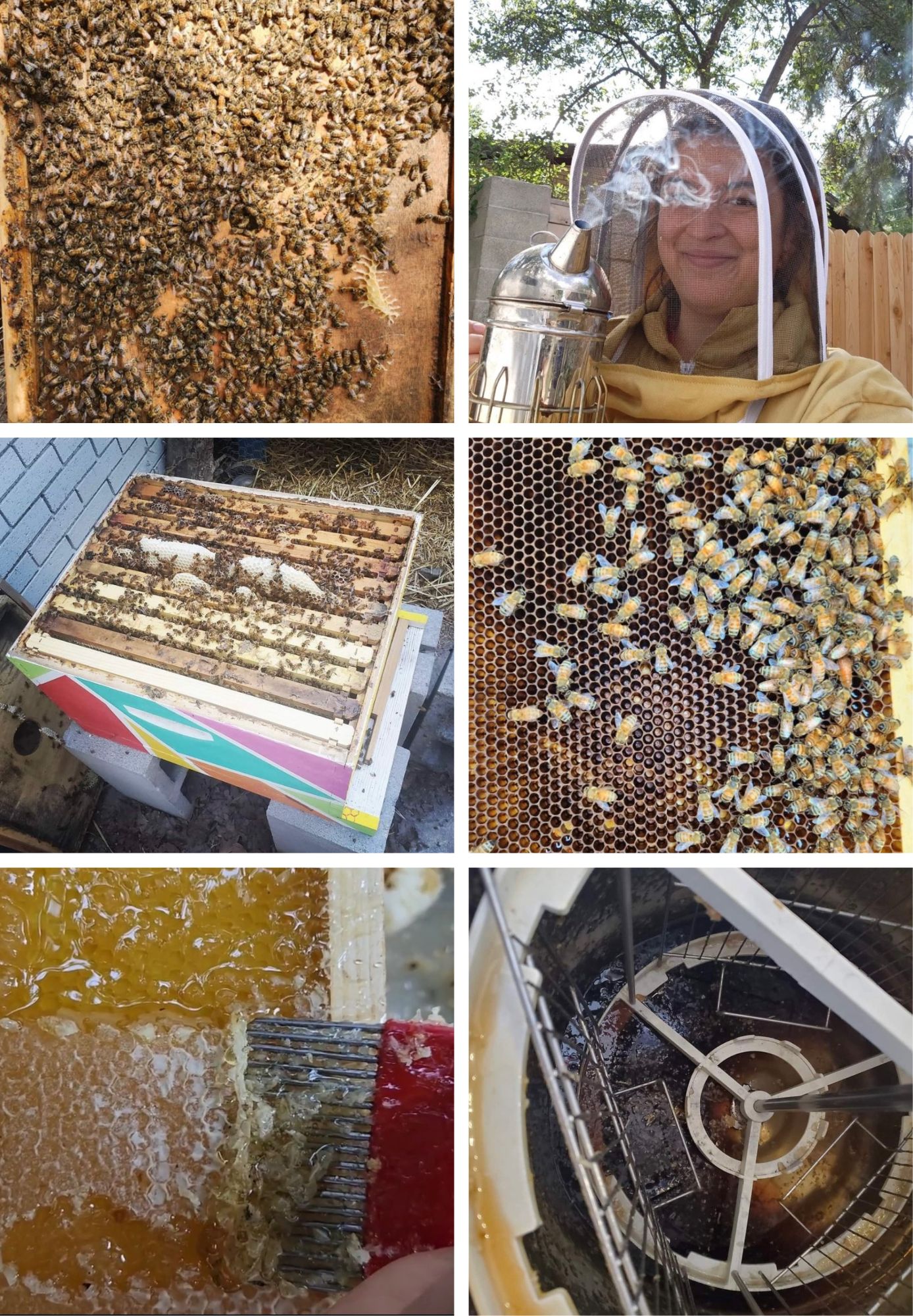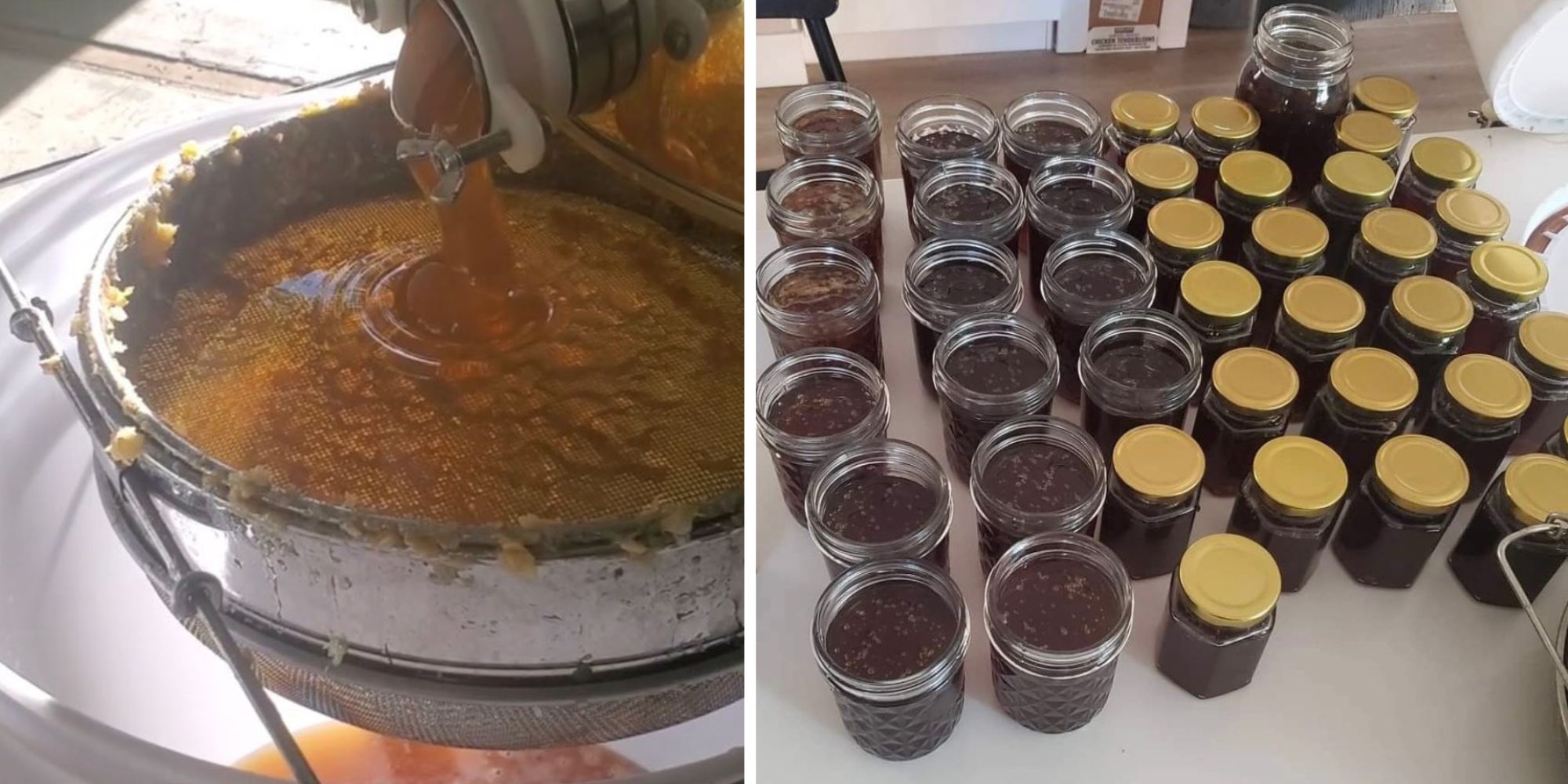By SLCgreen intern Kellen Hunnicutt

It’s Pollinator Week! So we’re highlighting the role beekeeping plays in protecting Utah’s instrumental pollinators. Plus it can be a fun hobby if you’re up for the challenge! RyLee Curtis, a Utah resident, and bee-lover, has been beekeeping as a hobby for five years and is excited to share the knowledge she’s gained with the SLCgreen community.
How do you bee-gin?
Five years ago, Curtis started her beekeeping journey by ordering bees and some supplies in December from the Intermountain Farmer’s Association (IFA) Country Store. Curtis highly recommends “a minimum of two hives,” so if one hive is having a problem, a beekeeper can “troubleshoot” with the other, healthy hive. “You don’t get [the bees] until spring,” she explains. To prepare, she “watched a lot of YouTube videos and ordered the Bee Bible on Amazon,” but “nothing prepares you for the first moment when you crack open the hive.”
Here are some of the necessary supplies you’ll need to keep bees:
- Housing (Hives): A bee colony and hive are different things; the colony is the group of bees, while the hive is the house they live inside. The Langstroth hive design is the most commonly used by beginners.
- Protective Gear: Some beekeepers wear full-body bee suits, while others opt for just a jacket, face veil, and gloves. The key thing is to stay safe from bee stingers!
- Tooling: Some specialty tools that make beekeeping and honey harvesting easier. Most beekeepers use a hive tool to move frames inside the hive, a bee brush to gently remove bees off the frames and keep a smoker handy to soothe aggressive bees when extracting honey.
Concerned about the cost of set-up? For most beekeepers, the price of a two-hive set up is between $800 and $1,000 for the first year. Luckily, most of these supplies are long lasting and can be used for years after the initial purchase. Curtis emphasizes that there is a “wonderful beekeeping community in Utah.” The community is supportive of new beekeepers and often willing to resell used equipment at a more affordable price point. Many local beekeepers are also open to mentoring new members of the community as well.
What are the bee-nefits and drawbacks of beekeeping?
One benefit of beekeeping is the potential to earn money. Curtis sells her honey and beeswax products on multiple social media websites. She keeps bees on “a small scale, so some years I make a profit and other years, I don’t, and that’s okay because it’s more of a hobby for me.” Every year without fail, she produces honey and beeswax, though the exact quantity varies yearly. “I love rendering the wax and making lip balm and hand lotion” she says. These items always make wonderful gifts for friends and family.

Owning beehives also helps support local pollinator populations. Your bees will help your and your neighbors’ gardens flourish.
A drawback of beekeeping is the hives can be fragile and troubleshooting issues can be stressful. “You’re dealing with insects that can’t communicate with you,” Curtis explains, “so much can go right and so much can go wrong.”
In the five years she has been caring for bees, she has faced two major obstacles: mites and the loss of a queen, both of which can cause considerable drops in hive population. “You need to know how to check for those,” she warns. Fortunately, Curtis was able to catch these problems and find solutions. Her two hives are happy and healthy today.
What is the time commitment like?
The amount of time spent helping the hives and collecting honey depends largely on the season. In spring through mid-summer, Curtis puts in about a half hour per week. When the honey is flowing, which usually starts in June and/or July, she spends an hour or two each week. Then, in the fall, when the honey flow ends, she returns to half an hour. “Then, in the winter, you don’t check on your bees at all because it can be harmful if you open it when it’s too cold outside.”
How often do you get stung?
Getting stung a few times is unavoidable as a beekeeper. However, it happens less frequently than one may think. Curtis has only been stung once this season and was strung two or three times last year. If the bees are “happy, they are less likely to sting you,” Curtis says.
Overall, Curtis loves being a beekeeper, and recommends the hobby to any honey-loving Utah residents.
If you or someone you know might want to start beekeeping, go to this website for information on Salt Lake City’s hive requirements and how to apply for a license.
